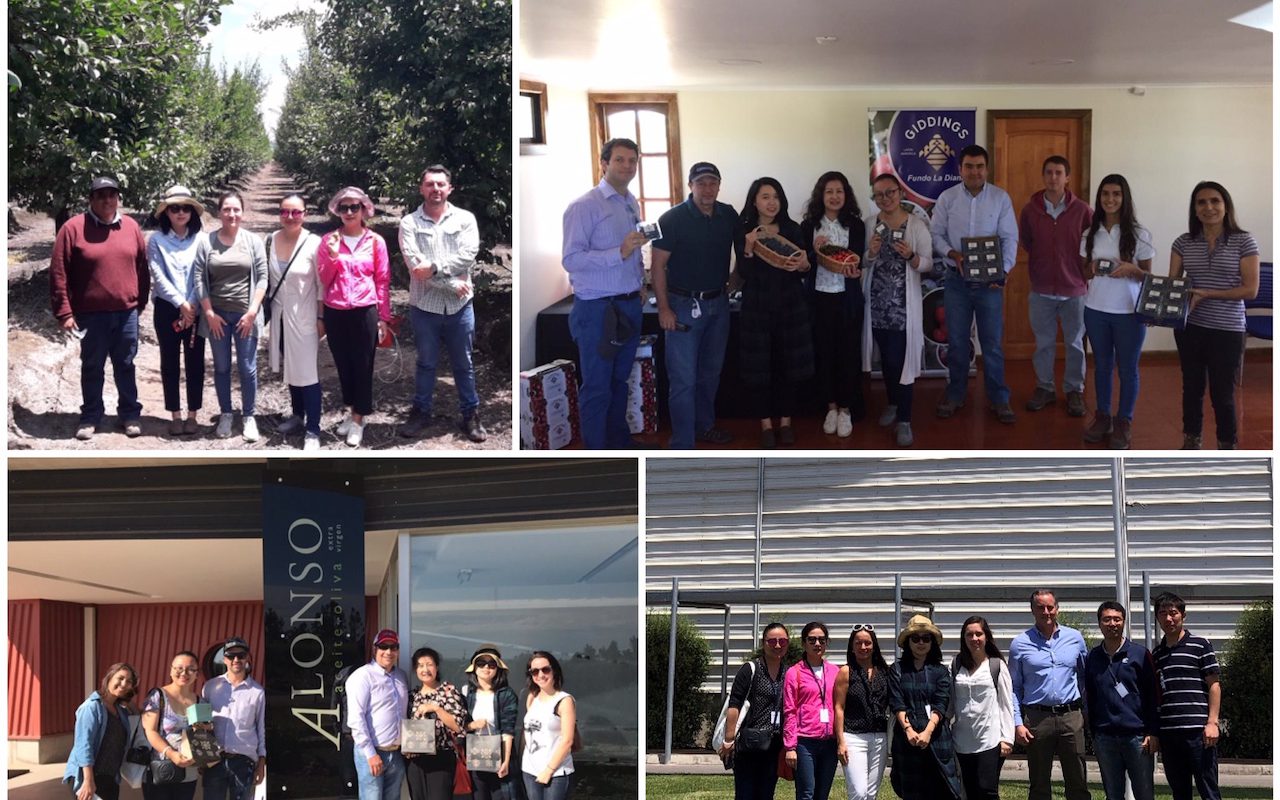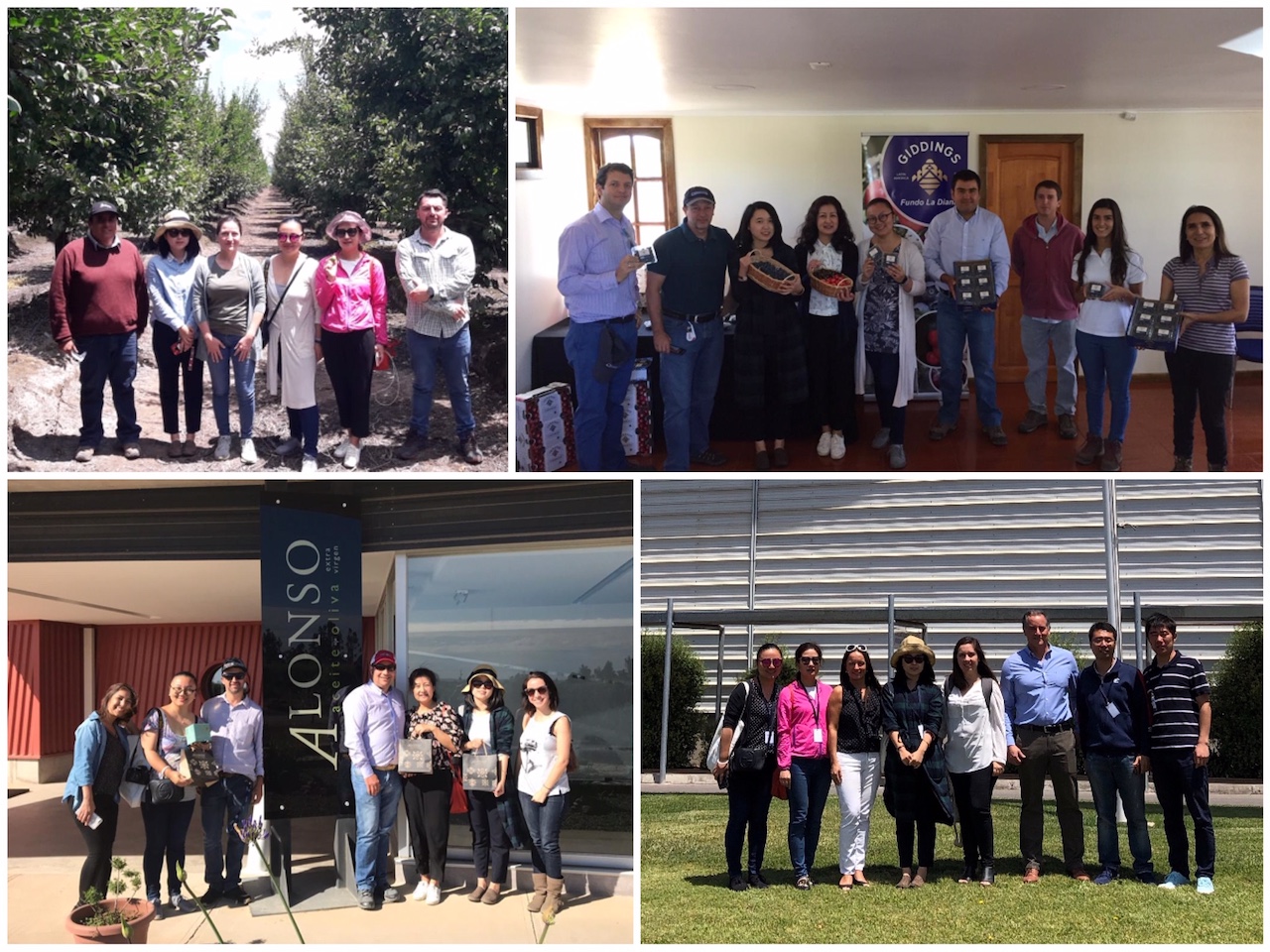
Challenges and projections for sectoral brands in the asian market
ProChile invited a group of journalists from China to visit Chile for a week to carry out activities in different areas and agrifood industries. The journalists saw directly many of the products exported to China. When the visit ended, representatives of different sectoral brands reported on the balance and projections for 2019 in the Chinese […]

ProChile invited a group of journalists from China to visit Chile for a week to carry out activities in different areas and agrifood industries. The journalists saw directly many of the products exported to China. When the visit ended, representatives of different sectoral brands reported on the balance and projections for 2019 in the Chinese market:
The President of Expocarnes, Juan Carlos Domínguez, remarked that:
“China is an important strategic ally for us. Therefore, we believe it was very valuable for our guests to learn directly about the processes, companies and key actors involved in producing the food that Chile exports to China”. He added that “Over 20 percent of our exports go to China, where we are known for the quality, taste and diversity of our meat cuts.”
Gabriela Moglia, General Manager of the Association of Olive Oil Producers said that: “The Asian market is in its early stages for us. Less than three percent of our shipments go to China, although the market offers great opportunities. In Japan, consumers are willing to pay a higher price for quality products, which is precisely what we have to offer. The same applies to China but, since it is a much larger population, we look for opportunities for consumers to favor good quality olive oil”.
Ignacio Caballero, Assistant Manager for Marketing at Asoex (Chilean Association of Fruit Exporters), emphasized the significance of having Chile’s food sector work together, and that economies of scale can be achieved in common activities that help promote Chile as a single brand. He added: “Asia is our third main export region. It represents 24 percent of our export markets but it grew to 31 percent in 2017. In the next five years, the Asian market will be the most important region for the Chilean fruit growing industry. This is a market that welcomes imported products, they value quality fruit, healthy products and the lifestyle this embodies.”
Francisco Contardo, General Manager of the Chilean Hass Avocado Committee remarked that: “Last year we were the largest avocado supplier in China. We brought in 10 percent of exports in 2017, thereby surpassing countries such as Argentina. In 2018, we conducted a promotional campaign in China for the third time. We believe that these occasions provide important opportunities for sectoral brands to meet and exchange views on how to work together and develop Chile’s image abroad”.
Andrés Rodríguez, Executive Director of Chile Prunes, pointed out that for the dried plum industry, growth is now targeted to Asia. “Chile is currently the number one exporter of dehydrated plums in the world and, at this stage, we want to focus on quality and on developing new markets. China is one of the most interesting markets, not only because of its huge population and purchasing power, but also because of its significant consumption of healthy products. The Chinese market absorbs 2.5 percent of exports and, for the first time in 2017, it ranked in the top 10 export destinations”.
Lastly, María Paz Soto, Trade Coordinator for Chile Nuts, finds that Asia is a complex and challenging market, specifically, the one for walnuts in shell which only opened up in 2014. She added that: “Although China is the largest producer and consumer of nuts in the world, its walnut production is not industrial. Therefore, demand for this product is constant. Chile currently has more than 40 thousand hectares dedicated to producing walnuts and estimates show that the current volume will double in five years. Accordingly, we must find potential markets such as China, capable of absorbing the growing supply that Chile will offer”.


